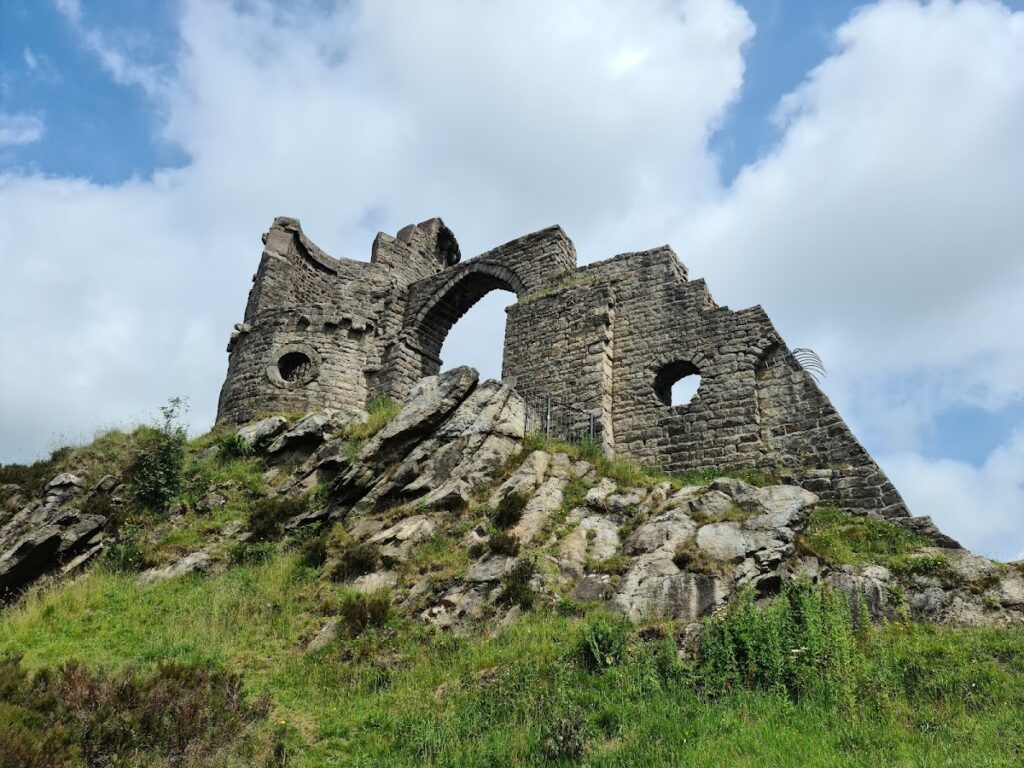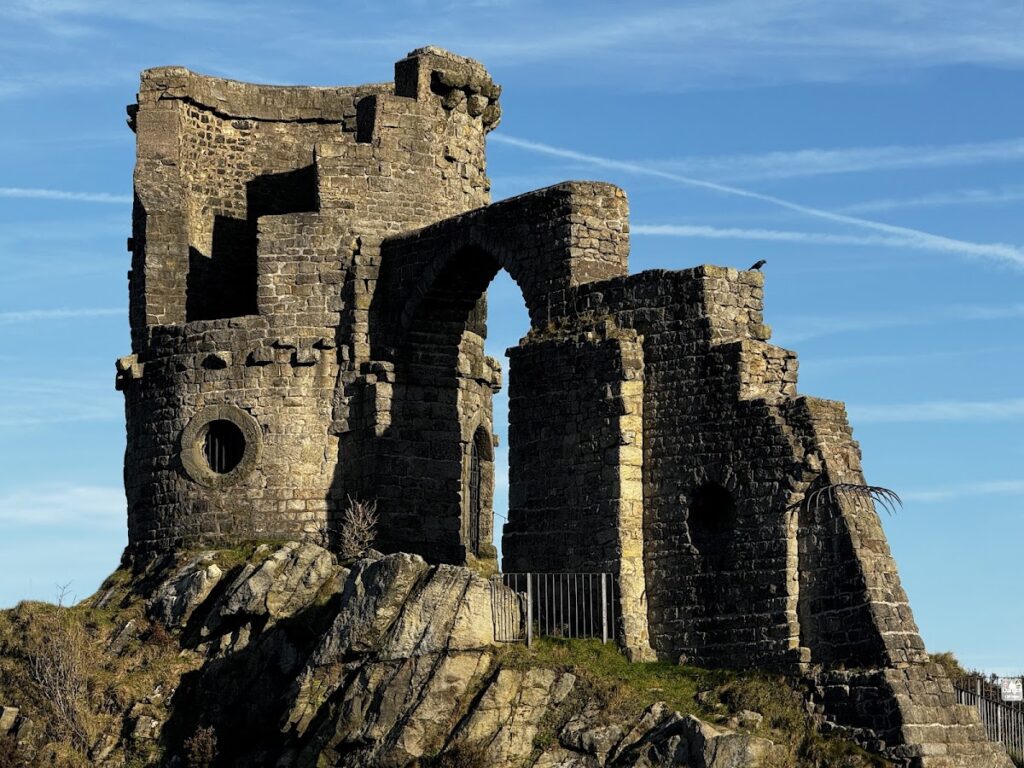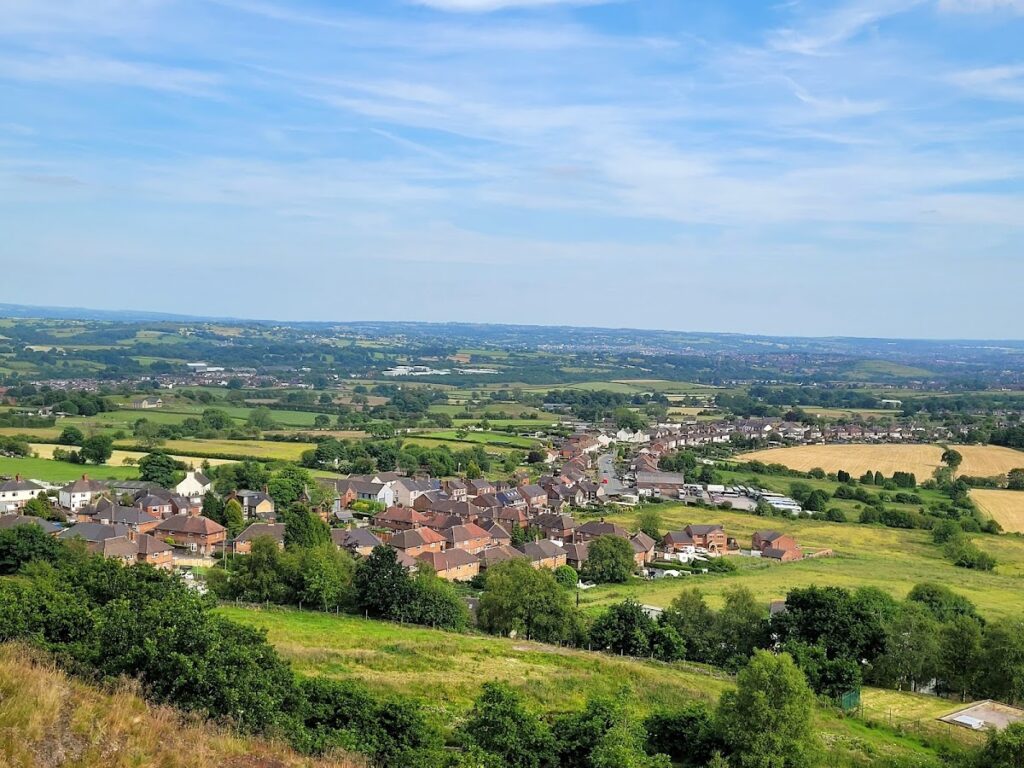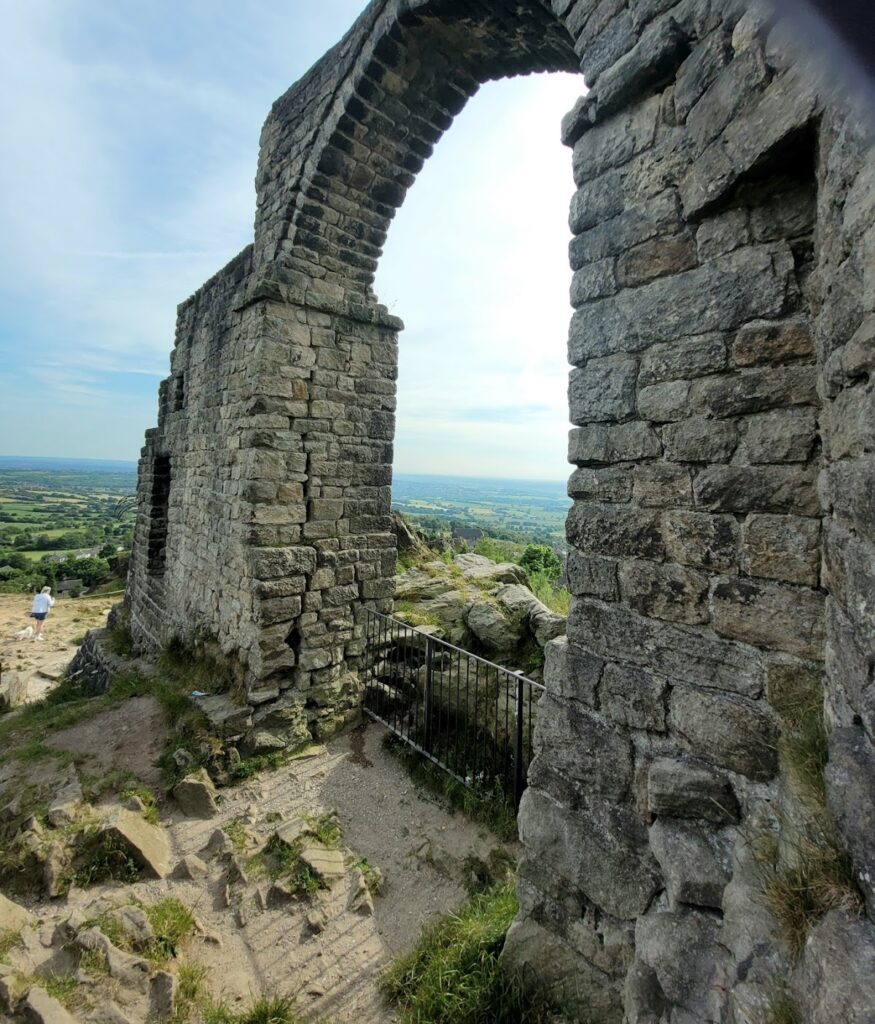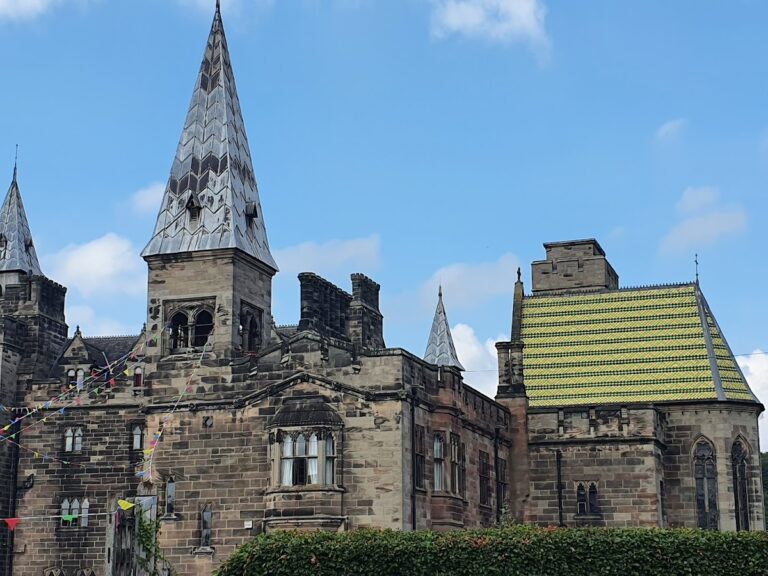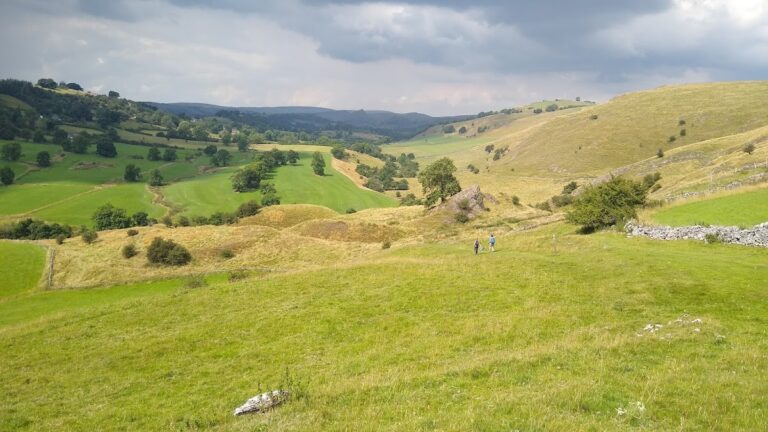Mow Cop Castle: An 18th-Century Folly in the United Kingdom
Visitor Information
Google Rating: 4.6
Popularity: Medium
Google Maps: View on Google Maps
Official Website: www.nationaltrust.org.uk
Country: United Kingdom
Civilization: Unclassified
Remains: Military
History
Mow Cop Castle is located in the village of Mow Cop within the United Kingdom. It was constructed in the mid-18th century by a local landowner, Randle Wilbraham of Rode Hall, who commissioned the building as a decorative folly rather than a defensive fortress.
The castle’s creation took place in 1754 during a period when ornamental buildings that imitated medieval ruins became fashionable among the English gentry. Rather than serving any military purpose, this folly functioned as an elaborate summerhouse topped with a circular tower. Its location was chosen deliberately on a prominent ridge marking the boundary between the counties of Cheshire and Staffordshire. This ridge also formed a division between two ecclesiastical jurisdictions: the dioceses of Chester and Lichfield, as well as the provinces of Canterbury and York, giving the site a distinctive geographical and spiritual significance.
In earlier times, the surrounding landscape held importance due to its production of high-quality millstones used in water-powered grinding mills. Archaeological work in the area revealed that the craft of stone quarrying here reaches back to the Iron Age, along with evidence of a prehistoric camp near the hilltop. This long history of human activity adds layers of depth to the location, even if the present castle structure dates to the 18th century.
The site also played a role in religious history. In 1807, it became the place for the first Primitive Methodist camp meeting, an event commemorated over a century later in 1937 when more than ten thousand Methodists gathered on the hill. That same year, the castle was entrusted to the National Trust, ensuring its preservation. Other notable moments include the celebration of the millennium on New Year’s Eve 1999, when Mow Cop served as a site for a flaming beacon within a nationwide event marking the turn of the century.
In modern times, public safety concerns have led to restricting access inside the tower with a locked metal gate. This measure responds to past incidents on the steep cliffs nearby, including suicide attempts and one confirmed suicide. The castle continues to hold cultural significance and appears as an important setting in Alan Garner’s novel, Red Shift, reflecting its place in local heritage.
Remains
Mow Cop Castle presents as an ornamental folly fashioned to resemble the ruins of a medieval fortress. It consists mainly of a circular tower intended as a summerhouse, perched atop a ridge that divides two English counties. Constructed in 1754, the building was built primarily of local materials designed to evoke the appearance of an ancient stronghold, though it was never a defensive structure.
The tower’s circular form and carefully crafted stonework simulate the weathered look of a fortress ruin. Visitors once had the ability to enter the interior, but safety precautions now limit access behind a locked metal gate. While entry is restricted, it remains possible to view the folly’s architectural profile from outside.
The site’s location on a natural ridge not only provides striking views but also defines important local boundaries—both civil and ecclesiastical—enhancing the site’s historical marking of landscape divisions. Although no specific decorative elements, inscriptions, or architectural measurements have been documented, the structure’s style and placement contribute directly to its identity as a designed landscape feature rather than a functional castle.
Archaeological investigations in the surrounding area have uncovered remnants related to earlier periods. These include millstones, known as querns, used for grinding grain in water mills, reflecting a long tradition of quarrying in this region. Artefacts date back to the Iron Age, and traces of a prehistoric camp have also been found near the site. These findings indicate that while the folly is a relatively recent addition, the hilltop itself has been significant to human activities for thousands of years.
Today, the building holds a Grade II listing, underscoring its recognized importance for historical and architectural heritage. Preservation by the National Trust maintains both the structure and its setting within the landscape, allowing it to remain a visible landmark with tangible links to regional history and cultural life.
